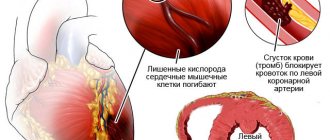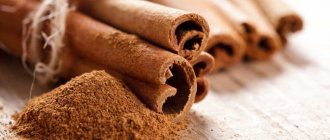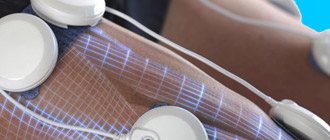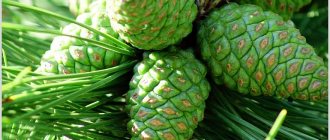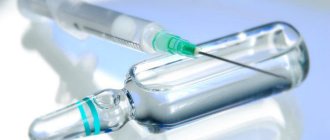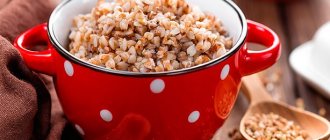Hibiscus - benefits and harm
Rose has absorbed 13 organic acids - citric, tartaric, malic and others. Vitamins, microelements, biologically active substances help strengthen the immune system. What are the benefits and harms of hibiscus tea? Among the positive properties are the following:
- prevention of colds, flu, ARVI;
- increasing endurance;
- reduction of nervous tension;
- stress management;
- strengthening the walls of blood vessels and helping regulate blood pressure;
- lowering blood cholesterol;
- antispasmodic actions are also in his power;
- has a beneficial effect on the liver, genitourinary and digestive systems (especially the stomach);
- normalization of metabolic processes in the body;
- improving memory and concentration;
- reducing the risk of developing heart disease;
- has diuretic and laxative effects.
At the same time, there are some features that may not improve, but may have a negative impact on health. So, red tea increases acidity (with a normal acid-base balance this will not harm, but if there are problems with the gastrointestinal tract, it will). Hibiscus increases blood pressure, so before consuming it is better to consult a doctor who can adjust the permissible level.
Hibiscus tea beneficial properties
Hibiscus tea is very healthy, the substances that cause its red color are anthocyanins, which have pronounced P-vitamin activity, that is, they strengthen the walls of blood vessels, regulate their permeability and blood pressure. Has antispasmodic and diuretic effects. Hibiscus tea strengthens the walls of blood vessels, normalizes blood pressure, reduces cholesterol in the blood, has an antibacterial effect, regulates the functioning of the gastrointestinal tract and liver, helps with allergic reactions of various kinds, and helps with toxic alcohol poisoning. The flavonoids contained in hibiscus help cleanse the body of toxins and heavy metal salts.
Tea kills some pathogens and can be used as an anthelmintic. Tea is a good laxative for colon atony and chronic constipation. The laxative effect it provides is mild and gentle. It has been established that a sustainable effect is achieved after long-term use of hibiscus tea for 15-20 days, repeated after a 7-day break for another 10 days. Hibiscus tea is an environmentally friendly product, it is harmless and recommended for people of all ages.
Hibiscus tea contains fruit acids, amino acids, easily digestible carbohydrates, macro and microelements, vitamins, and bioflavonoids. Regular consumption of hibiscus tea is a guarantee against hypovitaminosis and all the negative consequences associated with them.
The complex of vitamins and microelements included in the tea saturates the body with vital energy, toning it and increasing resistance to infectious diseases. Gammalinolenic acid in hibiscus actively works by reducing the amount of cholesterol, especially when it is present in the body in fairly high levels of low and very low density lipoproteins, preventing the development of sclerosis. Not only hibiscus tea, but also the flowers of the Sudanese hibiscus rose, according to African traditional medicine, have a good healing effect.
Hibiscus does not contain oxalic acid, which contributes to the formation of kidney stones. The production of bile with regular consumption of a tea drink or hibiscus tincture is not only stimulated, but the effect of protecting the liver from adverse effects is achieved. Hibiscus tea is especially recommended to reduce the effects of hangover. But one can hardly get carried away with its use, especially in the stage of exacerbation of cholelithiasis and urolithiasis.
Hibiscus tea and blood pressure
The drink affects a person’s blood pressure. Doctors recommend drinking a cup both for hypertensive patients to reduce their levels, and for hypotensive patients to maintain stable numbers. The therapeutic effect is achieved due to the presence of antioxidants. It is important to drink this tea 3 times a day to achieve long-term results. However, remember: do not drink the drink on an empty stomach! Otherwise, instead of the positive properties of hibiscus tea for high blood pressure, you will get stomach problems - there are a lot of acids there.
How does hibiscus affect blood pressure?
Conducted studies indicate that with regular use you can normalize vascular permeability, thereby avoiding jumps in the numbers on the tonometer. There can be many causes of problems, and often it is a complex of malfunctions in the body. It is clear that tea alone cannot cure the disease, but no one has canceled prevention! You need to know: the effect of hibiscus on pressure differs between hot and cold versions.
Hot hibiscus increases or decreases blood pressure
Consider the temperature when drinking tea so as not to harm yourself: if you want to normalize your condition, then hibiscus with high blood pressure should be drunk cold or slightly warm. Because a very hot drink will provoke dilation of blood vessels and capillaries, which will lead to an increase in blood pressure, and this is dangerous for hypertension. At the same time, the taste does not depend on temperature, so you can enjoy the drink.
Indications and contraindications for the use of hibiscus
According to expert reviews, the benefits of a drink made from Sudanese rose with moderate consumption are undeniable, but there are also contraindications that should be taken into account.
There is an opinion that hot hibiscus increases blood pressure, and cold hibiscus lowers it. However, studies have not confirmed this - it turned out that Sudanese rose tea at any temperature lowers blood pressure.
Conditions for which the use of hibiscus is indicated:
- hypertension;
- allergy;
- intoxication of various etiologies, including alcohol (hibiscus relieves hangover syndrome);
- swelling (has a diuretic effect);
- increased body temperature (has an antipyretic effect);
- intestinal atony, tendency to constipation (has a mild laxative effect);
- infections and helminthic infestations (has anti-infective activity).
In addition, the drink increases the body's resistance to infectious diseases, and with regular consumption stimulates bile production. Hibiscus does not contain oxalic acid, so tea made from it does not lead to the formation of kidney stones. However, during an exacerbation of urinary or cholelithiasis, drinking it is not recommended, as it can provoke colic. Hibiscus can increase the acidity of gastric juice, for this reason it should not be used for gastritis, gastric and duodenal ulcers.
How hibiscus tea affects the developing fetus and whether it can cause harm to an unborn child when consumed by a pregnant woman is not entirely clear. For this reason, during pregnancy, you should check with your doctor whether a woman can drink hibiscus.
How to brew hibiscus to lower blood pressure
It is better to use non-metallic utensils for cooking. Hibiscus reduces blood pressure if it is not brewed in boiling water, but filled with cold/warm water and left for several hours. Longer brewing time means a richer and healthier drink. Afterwards, the tea is filtered to reduce blood pressure. That's it, you can drink! Follow the norm - don’t get carried away too much; more than 3 cups a day is no longer good. Remember that only loose leaf tea is a useful additive; the quality of the bagged tea is questionable.
Three simple rules for taking hibiscus with low blood pressure
- It is best to use cold brew hibiscus. To prepare the drink, you do not use boiling water, but warm water (no more than 60 degrees).
- You should not drink tea immediately after eating. If you do not suffer from high acidity, consume hibiscus before meals. Otherwise, at least 2 hours must pass between food and drink.
- To treat and normalize low blood pressure, it is recommended to drink 1-2 cups of tea daily, without missing a single day for one month. Further on the patient’s well-being.
And one more useful tip: chewing the flowers left after brewing will help reduce cholesterol in the body, and also get rid of toxins and waste.
You may be interested in: Anti-worm tea - herbs in the fight against parasites
How to drink hibiscus tea with high blood pressure
A popular way to prepare hibiscus tea for pressure is to boil it. To do this, pour 1-2 spoons of rose petals into 300 ml of water and cook for 10 minutes. Can be prepared for several servings at once. Store in a dark, cool place, so if you are hypertensive, you will always have a chilled drink that will help bring your physical condition back to normal and not suffer. For variety, you can add milk, sugar, honey, mint, lemon balm, cinnamon, cardamom, cloves, lemon, ginger.
Is the degree of heating important?
The statement that hibiscus in hot and cold states has a different effect on pressure, respectively raising and lowering it, is actually erroneous.
Relatively recently, experiments were carried out at one of the institutes, where two groups of hypertensive volunteers of different age categories participated. One of the groups regularly took “placebo” (dummy pills), while the second systematically drank a miracle decoction of hibiscus flowers. The experiment was carried out for 6 weeks, and during them it turned out that the well-being of the group consuming hibiscus improved by an average of 10.4%, and in patients treated with pacifiers, by only 1 percent. It was also noted that both hot and cold tea lowers blood pressure.
According to the results of the studies, we can be confident that a hibiscus drink helps blood resistance decrease. Hypertensive patients are not only allowed to drink this tea, but also necessary.
If hypertensive crises often occur, the hibiscus drink should be consumed warm.
Contraindications
The benefits are not in doubt. However, there are those who should not drink hibiscus - there are contraindications for use and it will not be recommended, for example, it should not be given to children under one year of age at all. Drinking tea may harm yourself if you have:
- acute form of gastritis, increased acidity;
- peptic ulcer in an acute stage;
- urolithiasis, cholelithiasis;
- allergy to Sudanese rose or substances that are included in the composition;
- very low blood pressure - hypotensive people should also abstain.
Hibiscus and its composition
Hibiscus is red in color and slightly sour and sweet in taste. The raw material is Sudanese rose, and the distinctive feature is that any part of the bush is used for the drink. India is considered the birthplace of tea, but cultivation is widespread in other countries.
The main benefit is related to the composition of the raw materials, which includes the following substances:
- Acids. The composition contains ascorbic and citric acid, which give a sour taste. At the same time, the amount of vitamin C is lower than in rose hips, but due to the different types of acids, the product has a tonic effect on humans and is classified as a dietary product.
- Pectins. Such substances can gently cleanse the gastrointestinal tract, remove waste and toxins, and also regulate the functioning of the digestive system.
- Anthocyanins. They are important for the structure of cells and vascular tissues, due to which they influence pressure. The substance itself is an antioxidant and can reduce the risk of developing cancer.
It is useful not only to drink hibiscus tea, but also to eat Sudanese rose after brewing. It can also have a positive effect on blood pressure and the entire body as a whole.
Hibiscus during pregnancy
During pregnancy, a natural drink is recommended to boost immunity and remove toxins. In addition, it can bring many benefits to the expectant mother in terms of normalizing blood pressure.
For many women, a wonderful period is overshadowed by changes in tonometer readings. But this can be avoided by taking red tea.
The question arises: how to drink hibiscus during pregnancy? Doctors recommend drinking the drink half an hour after eating. If you have low blood pressure, you can brew a cup of tea no more than once a day after consulting your doctor. In addition, it is more likely to be prescribed not to increase the readings on the tonometer, but to eliminate toxicosis, vitamin deficiency and remove toxins from the body. If you have high blood pressure, you can drink the drink throughout the day, but in small portions. In the hot summer, give preference to iced tea (it relieves thirst), in winter - hot.
Recommendations for expectant mothers:
- consume no more than 300 ml of hibiscus per day;
- It is better not to take tea in the afternoon, and after 20.00 it is better to give it up altogether;
- Do not drink the drink on an empty stomach.
Important! Pregnant women are prohibited from drinking strong teas. Therefore, to prepare a medicinal drink, it is enough to brew the petals for 2 minutes.
How does tea affect high blood pressure?
According to research, drinking 1 glass of hibiscus per day reduces the risk of developing hypertension by 35%. This is a very significant number. If you drink red tea for a month, the numbers on the tonometer when measuring blood pressure will drop by 15%.
If you have high blood pressure, it is recommended to drink tea chilled or lukewarm. At low pressure - hot, since hibiscus greatly expands blood vessels and capillaries. Some doctors note that a surge in pressure can be triggered by any hot drink, including green and black tea, so it is quite difficult to accurately predict the effect of hibiscus on low blood pressure.
In this video, in the program “Live Healthy,” Elena Malysheva talks about the advantages and disadvantages of hibiscus. How to drink it correctly and what are its contraindications.
Hibiscus - tea that lowers blood pressure
Hibiscus tea is prepared by brewing dried hibiscus flowers, or Sudanese rose - a beautiful plant that is used in Europe for decorative purposes. The drink has a high taste, when cooled, it perfectly quenches thirst in the heat, and for many centuries people have been using it as a remedy. Hibiscus is rich in vitamins - it contains the largest amount of them compared to other types of tea. It stimulates the immune system, increasing resistance to infections, improves digestion, produces a mild sedative (calming) effect, and also significantly lowers blood pressure.
Hibiscus tea has a pronounced antihypertensive effect
In various sources there is a statement that the ability of hibiscus to lower or increase pressure is affected by the temperature of the water during brewing. Allegedly, a drink brewed with cold water lowers blood pressure, and with hot water it increases it. In fact, this is not true; hibiscus tea lowers blood pressure no matter how it is prepared.
Hibiscus can be drunk cold or hot, brewed with boiling water like regular tea, boiled or infused in cold water - this can affect its taste, which, however, is perceived individually (some people like to drink hot hibiscus, others chilled) , but not on antihypertensives.
Sudanese rose petals: how to brew?
Herbal tea lovers know many ways to prepare a drink that is not only amazing in taste, but also healing. The same applies to hibiscus, which is considered a cult drink in the East.
Also read: How raspberries affect blood pressure
4 proven ways to prepare tea from Sudanese rose petals:
- Hot. Rinse the cup with boiling water and put a teaspoon of dry tea mixture into it. Pour hot water, cover and let stand for a couple of minutes, then you can drink. For hypotension or hypertension, it is allowed to use a sweetener - honey or fructose, but the drink is already good without any additives or additives.
- Cold. Prepare the drink according to the above recipe, but leave to steep until completely cooled. You can add a few ice cubes. This tea will perfectly quench your thirst and restore the body's water balance.
- Decoction - cold hibiscus. For this recipe, dried rose petals are soaked in water for a couple of hours. Use cold water; the container should be enameled. After this, the liquid is brought to a boil over high heat and removed from the stove. The broth should cool completely with the lid closed. Serve in tall glasses with ice.
- Infusion - cold hibiscus with raisins. Add the number of petals and raisins to taste, but so that the total amount of the mixture does not exceed 100-150 grams. It needs to be poured with boiling water, preferably in a thermos, and left for a couple of hours until the petals give the water their color, taste and nutrients. The tea leaves can be used a couple more times.
conclusions
Hibiscus is an amazing and one-of-a-kind herbal elixir. It is as if it was given to man by nature itself to protect and heal the body in a natural way.
When taken regularly, the infusion is, first of all, an effective remedy for lowering blood pressure and stabilizing it. The active substances in the infusion act in three directions at once: they dilate elastic blood vessels, strengthen the vascular wall and increase urination.
Properly prepared tea extract saturates the blood with natural antioxidants, antioxidants and oncoprotectors. Prevents the development of pathogenic microflora and strengthens antiviral immunity. Helps fight overeating and atherosclerosis.
Of course, you shouldn’t rely only on the miraculous effect of the infusion. And sweep aside all other methods of treatment. Despite all its healing effect, hibiscus is far from a panacea. Especially if the body is already in the grip of the disease. But if we are talking about prevention, feeding the body with living natural “vitamins”, hibiscus will be a real help.
Well, lovers of natural and healthy drinks will love its exotic taste, combining bright sourness, subtle sweetness, and a cherry aftertaste.
Where to find and how to choose
The packaged drink made from tea “dust”, sold in many pharmacies, should not be taken into account at all. It is important to find whole dried amber inflorescences of the Sudanese rose. Numerous reviews say that the taste of real tea is much brighter and richer than that of bagged tea. You can often find the necessary raw materials in tea stores or special departments of hypermarkets. Dried flowers or petals are usually sold in clear, sealed packaging. There is more than enough tea there, and it is inexpensive.
Selection rules:
- Due to the packaging features, when choosing tea you can see it in as much detail as possible. So pay attention to the size of the inflorescence: the larger the flower, the more vitamins and useful minerals the plant has managed to accumulate. The best option is a flower of at least a decimeter in diameter. If the package contains only hibiscus petals, their height should not be less than 4 cm.
- Also pay attention to the integrity of the flowers or petals: if they are finely broken, it is better to refuse such a purchase altogether. Remember: the more damaged petals in the package, the poorer the quality of the herbal tea. The quality of raw materials for brewing a drink is not only the aesthetically attractive appearance of the finished decoction, but also the composition of the tea itself. Thus, broken leaves may indicate that the raw material was overdried, and the lion's share of the beneficial components was lost as a result.
- The color of the hibiscus should be rich. The bright ruby hue indicates that the raw material contains a high concentration of anthocyanins, which have a strengthening effect on the walls of blood vessels and promote the regeneration of dead cells. If the tea in the package is pale, then the petals contain a minimum of this substance.
- Don't stop your eyes on cardboard packaging. Choose tea only in transparent bags so that you can make the right choice.
And remember: only by choosing high-quality raw materials will you experience the full range of beneficial properties of tea.
Hibiscus tea for blood pressure is nicknamed “Rose Flower of Sudan”
The drink, which directly affects the state of the entire circulatory system, was nicknamed the Sudanese rose for its beneficial properties and similarity to the red rose, and also because Sudan is considered its homeland. The rare tea quickly became widespread in Egypt. It is used both as a drink and as an ornamental plant. Around the world, people consider it tea, but in Egypt it is traditionally called a healing drink.
In Russia, people believe in its anti-aging benefits, so they often drink it as a soft drink. In modern times, its popularity is increasing due to the active struggle of people with hypertension. Long before winter, its petals are dried to brew aromatic, hot tea on cold evenings. In dried form, it retains its beneficial properties, which increases its accessible use not only in its raw form. The plant from which the hot drink tea is prepared in Malaysia has five petals, each of which symbolizes one of the commandments of Islam.
Hibiscus has a beneficial effect on human health, toning the body, giving it vigor and normalizing the functioning of the circulatory system. The healing power of red hibiscus rose petals has long been known in the Far East. A daily infusion of three cups of tea can relieve muscle spasms and swelling, which will save you from pain and discomfort. Doctors recommend turning their attention to tea to all men who want to be in full bloom and not suffer from male ailments and painful misfortunes.
Hibiscus has spread throughout the world under various names: in Iraq it is called “Kujarat”, in the Caribbean islands “Sorel”, and on the African mainland “Wonngo”.



